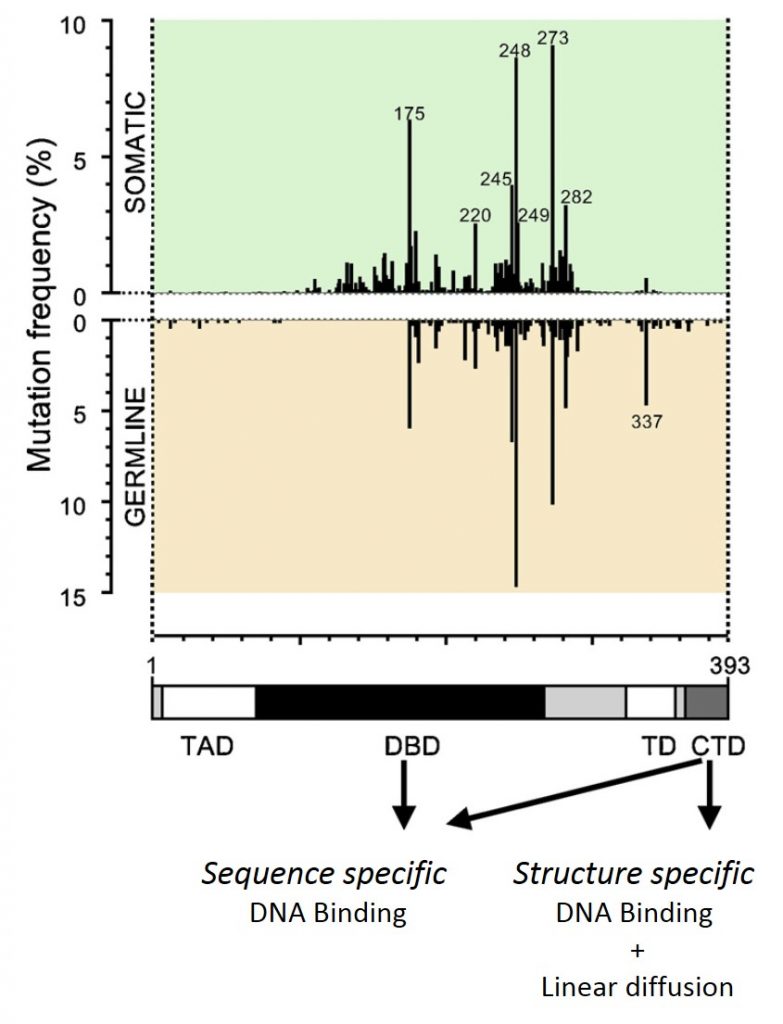The tumor suppressor p53 is a transcription factor that is activated and increase in concentration in response to various kind of stresses. It then regulates the expression of a variety of genes involved in DNA damage response, by binding in a sequence-specific manner to distinct DNA targets. The level of p53 in human cells can change many folds in response to a variety of stress and cellular environments. This determines the relative expression of its target genes, and thus biological consequences, such as physiological functions at basal level, cell-cycle arrest, DNA repair and autophagy at low level stress, and senescence, apoptosis (cell death) and necrosis at severe stress levels. p53 in normal unstressed cells is present at low levels while upon exposure of cells to genotoxic agents, cellular levels of p53 increase.
Therefore, the result of initiating a specific response pathway in the right time and circumstances is critical for cell life.The tumor suppressor p53 acts as a transcription factor recognizing diverse DNA response elements (REs). p53 is a multi-domain transcription factor consisting of the transactivation domain (TAD) , the core domain that contains the sequence-specific DNA binding domain (DBD), and the C-terminal domain (CTD) which includes a tetramerization domain and a regulatory domain that contain a separate sequence non-specific DNA binding activity. p53 bind to its DNA targets as a tetramer, composed of a dimer of dimers (Figure) via its DBD.
The tetrameric p53 binds cooperatively to specific DNA response elements upstream of a gene, composed of two half sites. Theses are two decameric half-sites of the general form RRRCWWGYYY (R=A,G;W=A,T;Y=C,T), separated by a 0-18 base-pair linker (Figure 2) .~50% of all tumors carry mutations within the TP53 gene, disrupting p53’s tumor suppressor activity (loss-of-function mutations, LOF) and may also switch the mutated p53 (mutp53) protein into an actively tumor-promoting oncogene (gain-of-function mutations, GOF). Read more about the project.

Distribution of somatic and germ-line missense mutations in cancer patients spanning the entire coding region of TP53. Mutational hotspot codons are labeled. TAD, transactivation domain; DBD, DNA binding domain; TD, tetramerization domain; CTD, C-terminal domain (Stiewe & Haran 2018).

